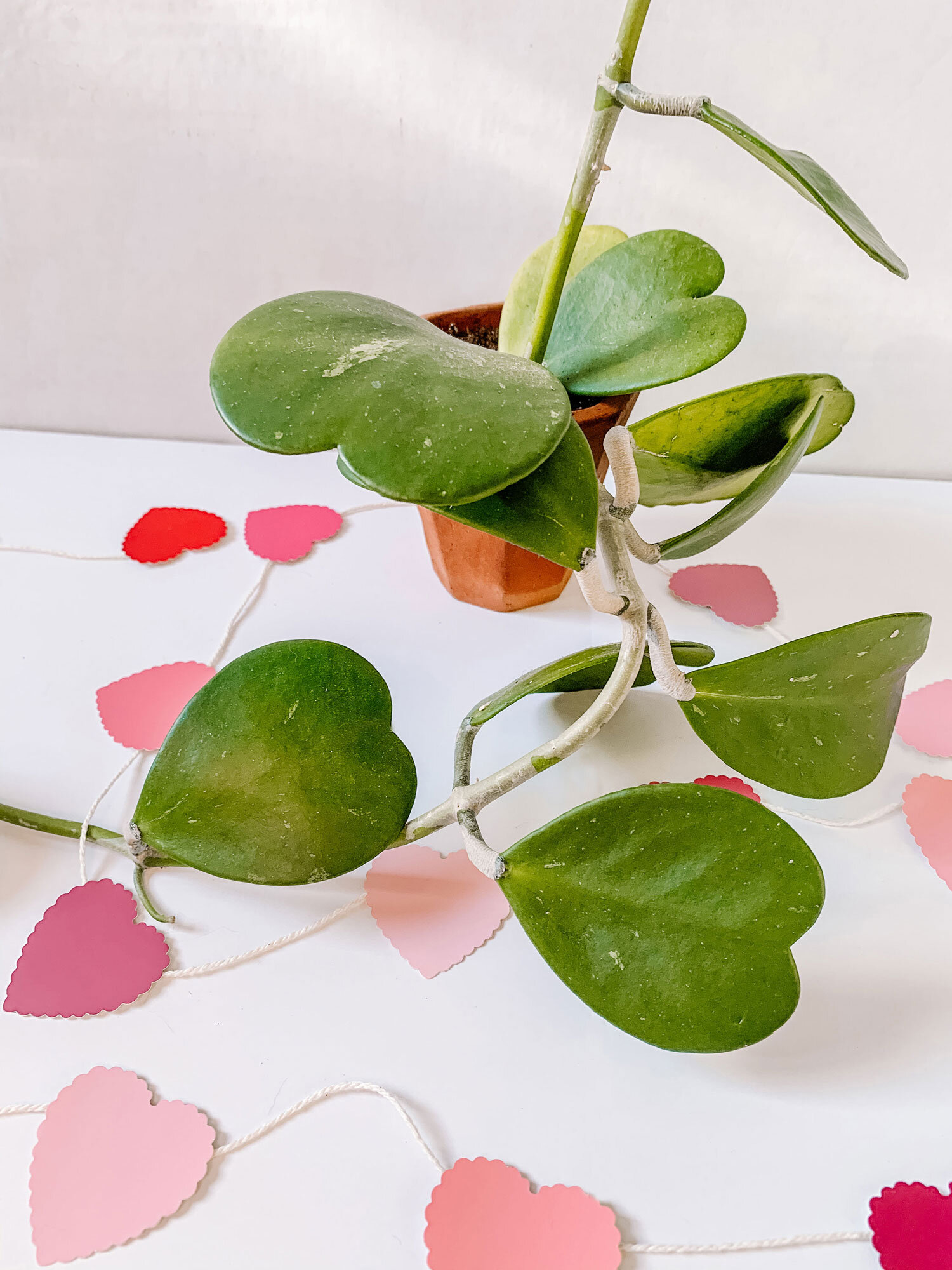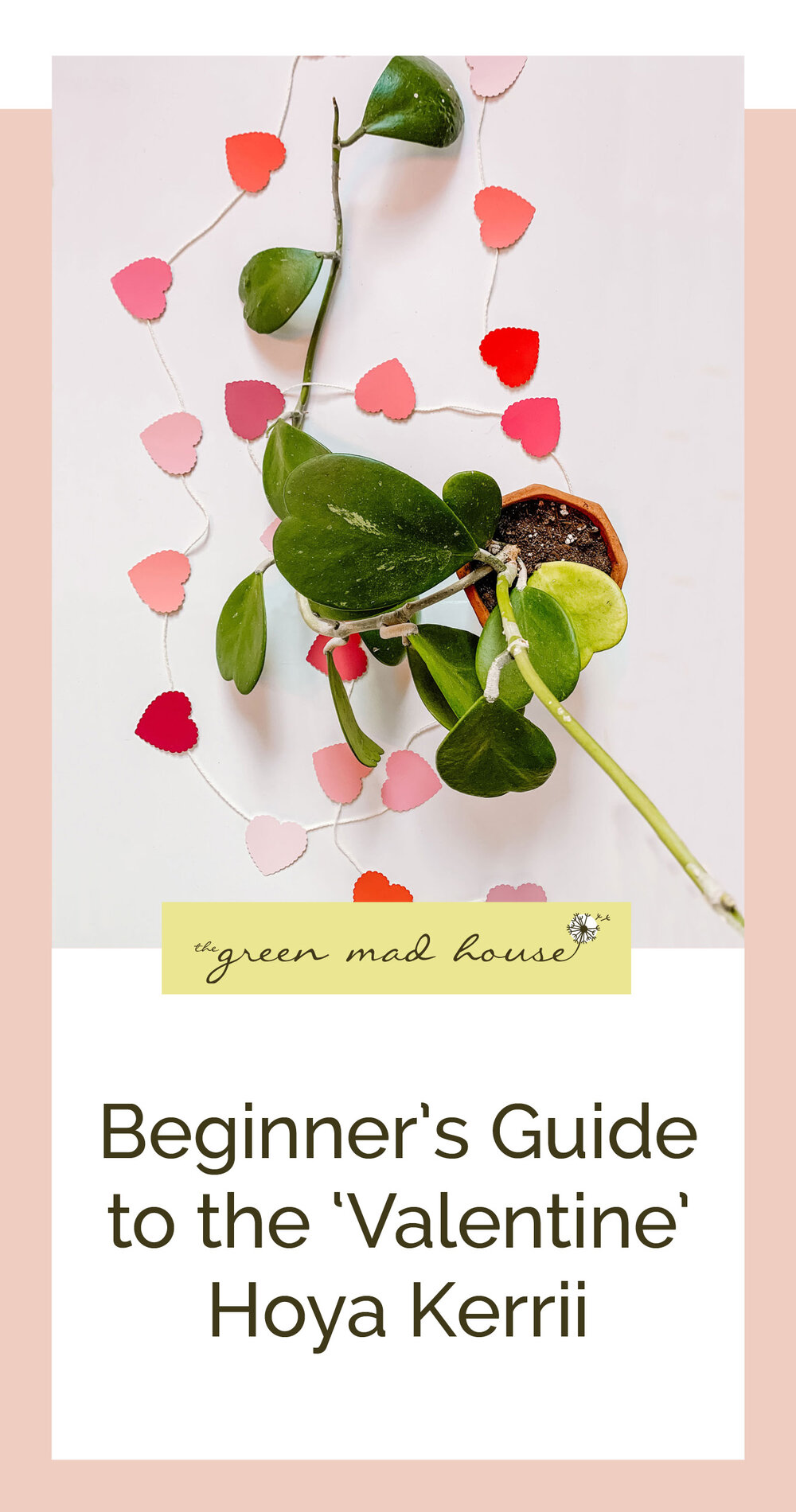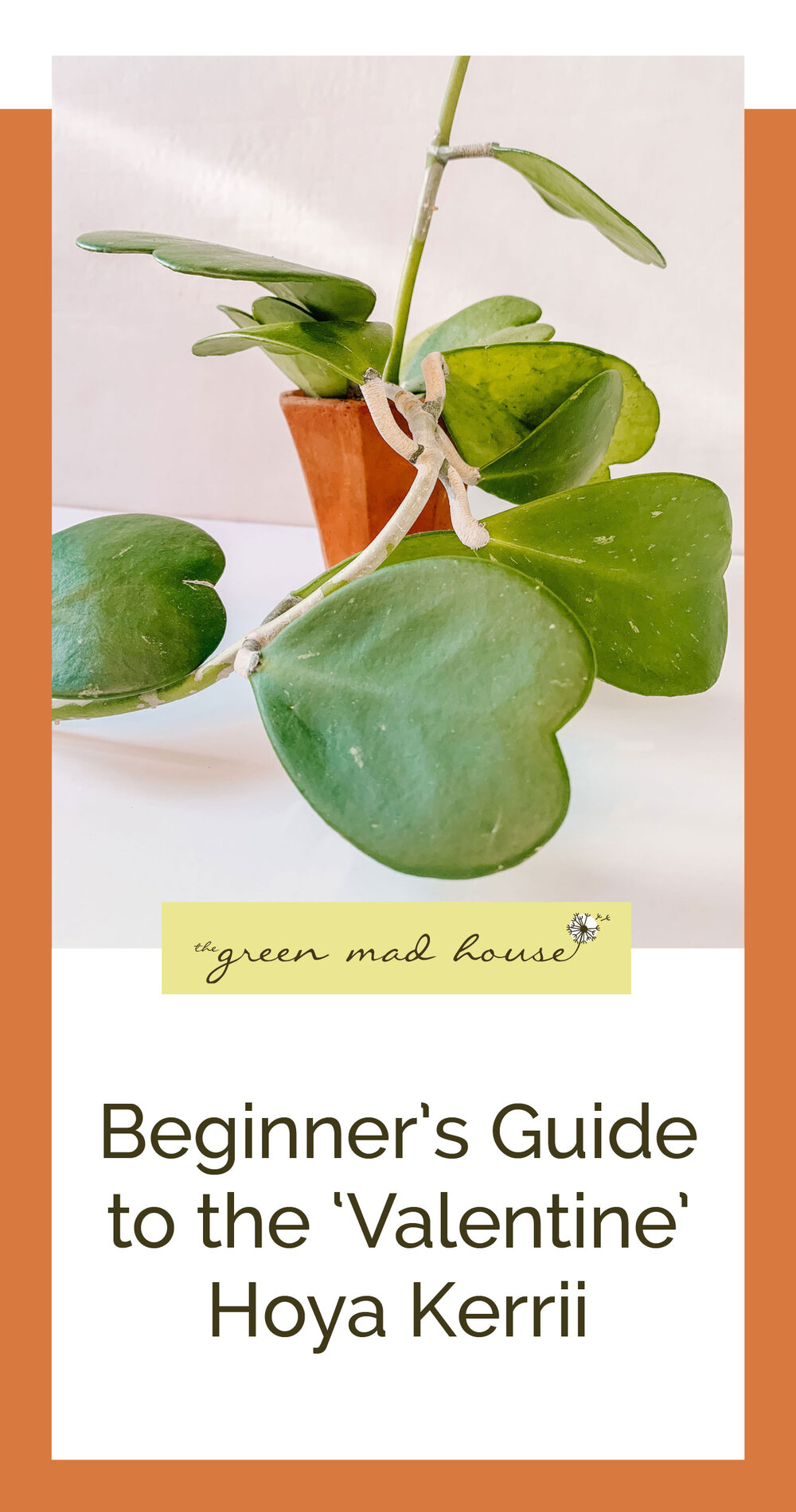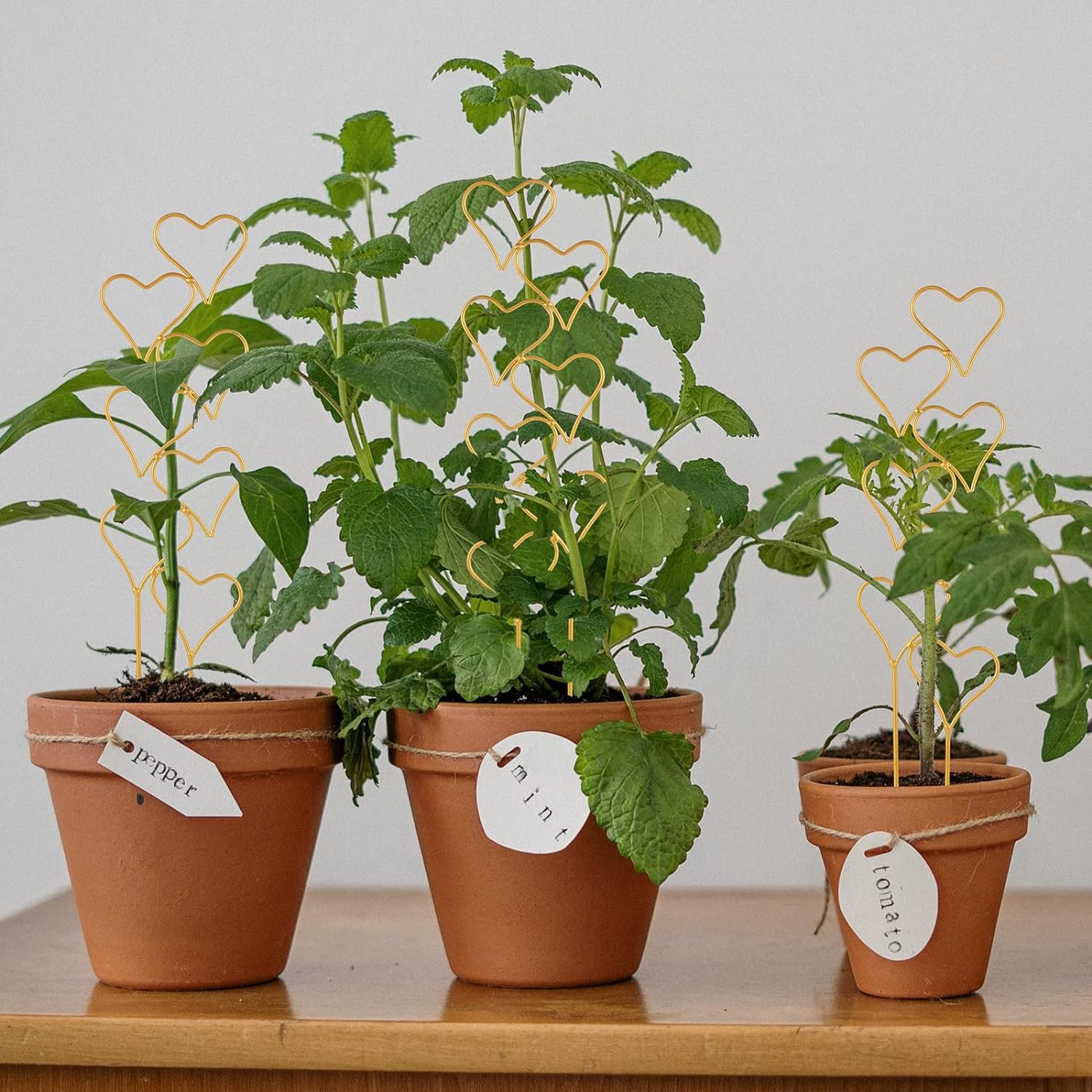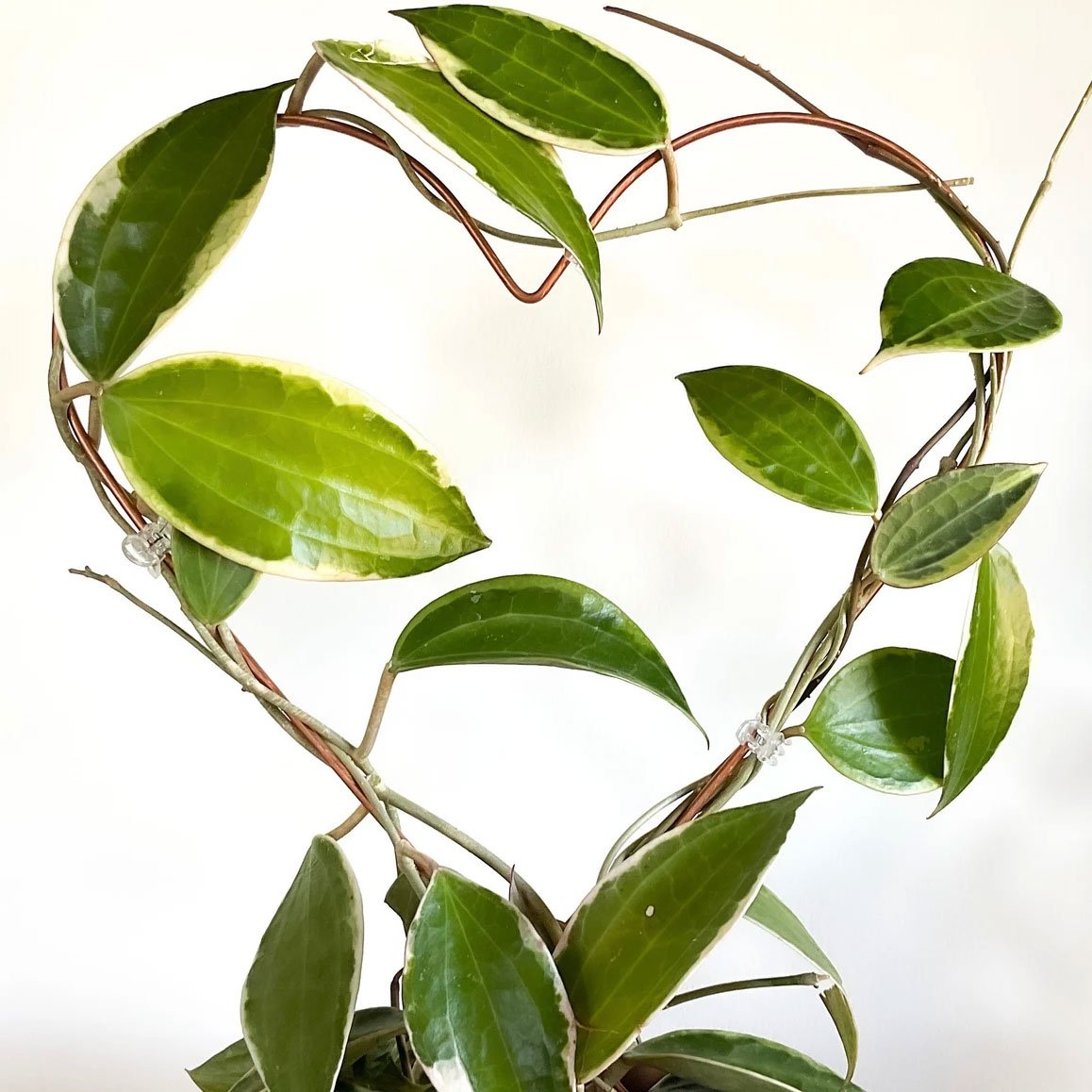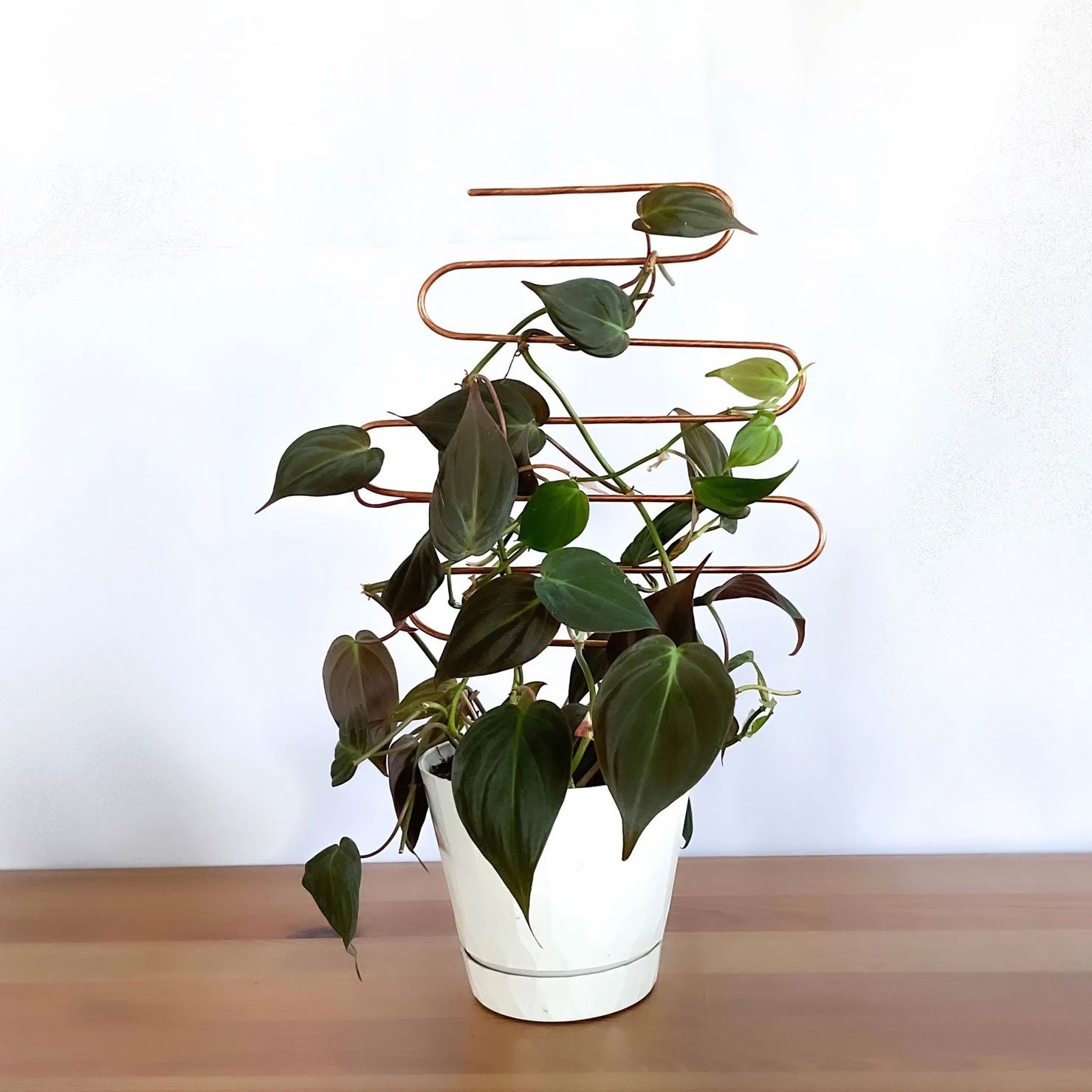Care Guide for the ‘Heart’ Hoya Kerrii
As an Amazon and Etsy Associate I earn from qualifying purchases.
Hoya Kerrii ‘Valentine’ with my Paper Heart Garland DIY
About the Heart Hoya
‘Sweetheart”, “Heart” or “Valentine” Hoya (hoya kerrii) is a thick, succulent-like tropical vine that is easily identified by its heart shaped leaves. Hoyas, or “wax plants” named so for its thick, waxy leaves, are relatively easy to care for, pet-safe (BONUS), they live a very long time, have beautiful porcelain-like flower clusters, and grow to extensive sizes and lengths. Native to Southeast Asia, Hoyas are tropical despite their succulent-like leaves.
The Heart Hoya is often seen around Valentine’s Day being sold as a single leaf (please check the varieties section below) planted upright in a small pot. Don’t let the single leaf fool you though, these Hoyas will reach lengths of 13 feet and become a mass of green hearts. These vining qualities are best displayed via a hanging basket, a trellis or moss pole, or trailing from a shelf. If you are lucky, your Heart Hoya will grant you a cluster of white blooms with burgundy centers. One mature plant can give you more than 20!
Varieties of Heart Hoya
Heart Hoyas have three different varieties and each are beautiful in their own right.
Hoya kerrii “Valentine” - Yes, this is the basic Heart hoya. Just a solid green, it is the most common variety and the original.
Hoya kerrii “Albomarginata” - This variety has a creamy, yellow hue with green centers to give the appearance of a heart within a heart. Its blooms are not white but instead yellow.
Hoya kerrii “Splash” - There are a few varieties of Hoya named Splash so you may get some mixed results when you try to google it. They are named this for their silver pattern on their leaves that looks like a jackson pollock painting. This one can be hard to find.
Hoya kerrii Single-leaf - This isn’t variety but it is something that should be noted. As I mentioned, you will see these single leaf options for sale in stores. These WILL NOT grow any farther. Unless it has a node coming from it, it will be stagnant. I think this is a common mistake as you see a plant and think it is going to grow but not in this case so be aware.
How to Care for your Heart Hoya
SHAPE: These vining qualities are best displayed via a hanging basket, a trellis or moss pole, or trailing from a shelf. A new trend has them growing in trellises that are shaped like hearts, circles, leaves, really any fun shape you can think of! The stems are not bendy so unlike a pothos, you cannot just wind your Heart Hoya around something when you feel like it. You must start from the beginning with it growing on the shaped trellis for best results.
LIGHT: Heart Hoyas are a little flexible with light. Most of mine reside in an east window or away from a window but with bright indirect light. They will survive with medium light but as they are already slow growing, this may result in zero growth.
HUMIDITY: You may think succulent leaves = dry air but these babies are tropical. Heart Hoyas want humidity but are not going to punish you if you can’t provide a lot. If you live in a dry climate you can purchase a humidifier (this is mine), place your hoyas in your bathroom (hot shower excuse!), mist them regularly, and/or keep them on a tray of pebbles filled with water.
WATER: It is better to underwater than overwater a Hoya. Their thick leaves store water so I only water when the soil gets fully dry. They do not like their toes to stay wet so make sure you have a fast draining soil (plenty of perlite and sand) and a pot with a drainage hole. These can be epiphytic, like orchids, so they do not need nor want wet soil. In the summer mine get watered once a week and in the winter every 2-3 weeks.
Common Questions
PROPAGATION: The most important thing about propagating your Heart Hoya is ensuring there is a stem with your cutting. Without a stem and nodes, you will just have a single leaf that will root but not grow.
Fill a ziploc bag a third of the way with soil that is free from fungus and gnats.
Cut your Hoya with a section of stem and place it in the soil so the stem and bottom of the Hoya are covered.
Spray the inside of the bag with water and seal it. This creates a humid greenhouse effect,
Only open the bag if you need to spray again or the soil looks dry.
Place the bag in a bright location or under a grow light.
FLOWERING: It is hard to say when this will bloom. Mine have not graced me with blooms yet. They should bloom when they are mature so don’t expect anything from your baby Heart Hoya. Some say that keeping your plant more root bound will accelerate blooming. Never cut the long tendrils that reach out, blooms and new leaves come from these.
POTTING MIX: A standard cactus/succulent soil can work if need be but I like to add perlite, charcoal and pine bark. Some Hoya growers opt for growing solely in expanded clay balls.
POTTING: Hoyas enjoy being root bound so don’t feel you need to pot her up every year just remember to fertilize in spring and summer. That being said, don’t ever pot down. Here is a guide to repotting!
Hoyas are one of my favorite types of plants which is really saying something. My Heart Hoya holds a special place in my heart and I love seeing a new heart emerge. I hope to have all three forms someday but right now my one keeps me happy. Tag me on Instagram with your Hoya babies @thegreenmadhouse and let me know if you have any questions below. Happy Valentine’s Day!

